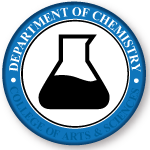Document Type
Article
Publication Date
4-1999
Publication Title
Journal of Medicinal Chemistry
Volume
42
Issue
8
First Page
1477
Last Page
1480
Abstract
Eleven novel dispiro-1,2,4,5-tetraoxanes 3 bearing unsaturated and polar functional groups were designed to enhance the oral antimalarial activity of the prototype tetraoxane 2 (WR 148999). With the exception of 3g and 3h, tetraoxanes 3 were available via the peroxidation of corresponding cyclohexanone derivatives in H2SO4/CH3CN. Tetraoxanes 3g and 3h were prepared by hydrolysis of ester tetraoxanes 3e and 3i, respectively. Five of the 11 tetraoxanes were inactive, but six tetraoxanes had IC50 values of 6-26 nM against the K1 and NF54 strains of Plasmodium falciparum compared to corresponding IC50 values of 28 and 39 nM for 2, and 10 and 12 nM for artemisinin (1). Ester tetraoxane 3e was the most active in vitro, some 2-fold more potent than 1. However, none of the six tetraoxanes active in vitro were as effective as either 1 or 2 in vivo; at single doses of 100 mg/kg most possessed little to no vivo activity in mice infected with Plasmodium berghei. Unsaturated tetraoxane 3a was uniquely more active when administered per os (po) than subcutan (sc). For this series of tetraoxanes, the discrepancy between vitro and vivo activities underscores the limitations of conclusions drawn solely from in vitro antimalarial data and illustrates a practical benefit of complementary single-dose in vivo antimalarial screens.
Recommended Citation
Dong, Yuxiang; F. Hoffmann-LaRoche Ltd.; Chollet, Jacques; Kaminsky, Ronald; Wood, James K.; and Vennerstrom, Jonathan L., "Synthesis and Antimalarial Activity of 11 Dispiro-1,2,4,5-tetraoxane Analogues of WR 148999. 7,8,15,16-Tetraoxadispiro[5.2.5.2]hexadecanes Substituted at the 1 and 10 Positions with Unsaturated and Polar Functional Groups" (1999). Chemistry Faculty Publications. 18.
https://digitalcommons.unomaha.edu/chemfacpub/18


Comments
Copyright © 1999 American Chemical Society.